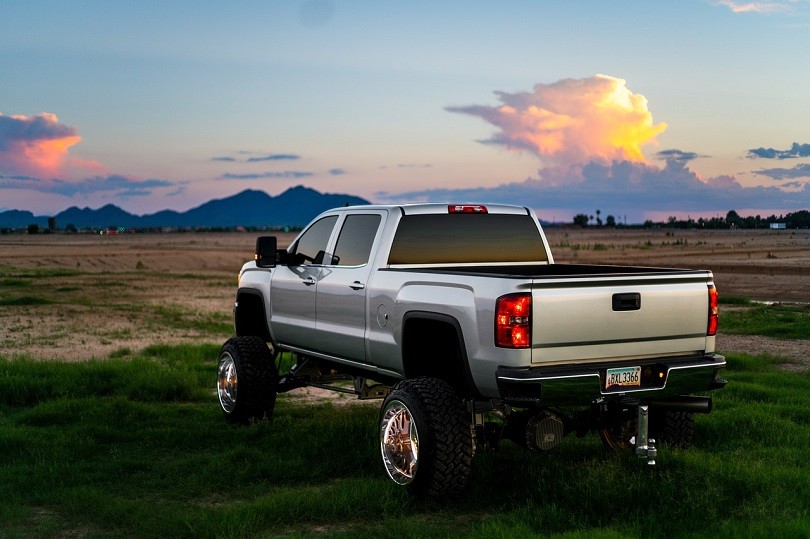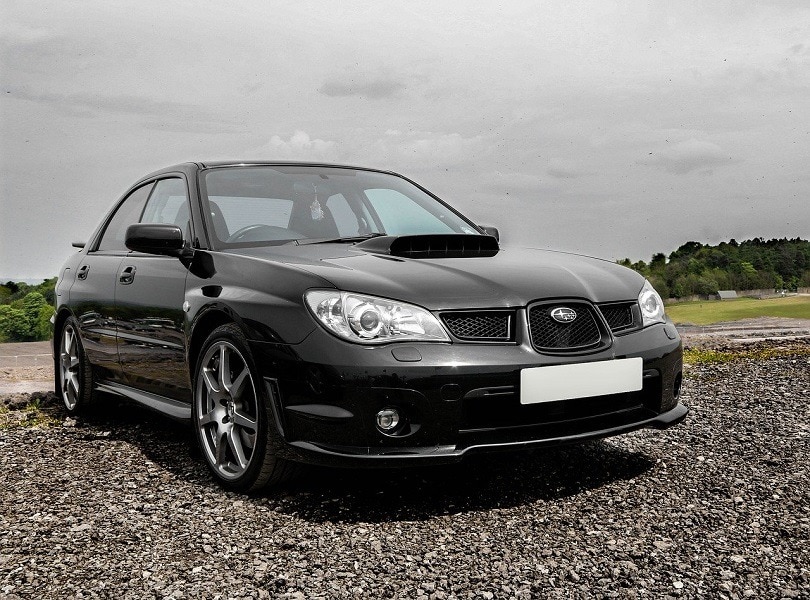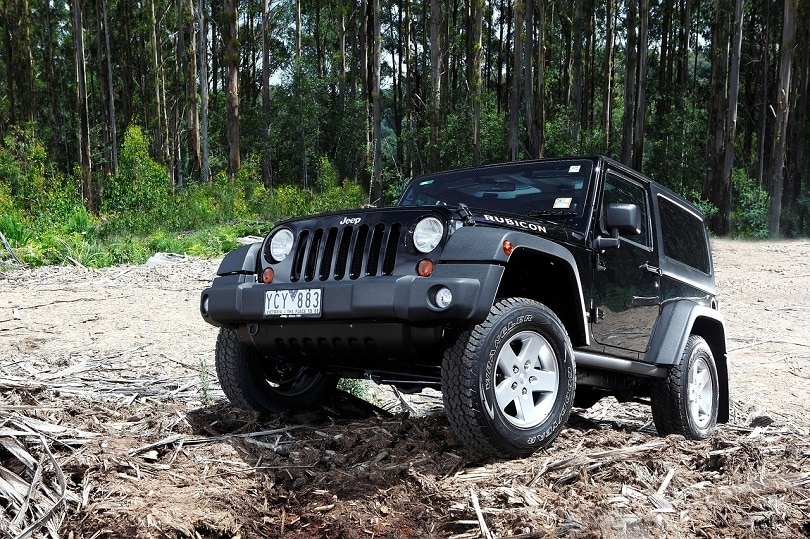All-Wheel Drive vs. Four-Wheel Drive: What’s the Difference?
-
- Last updated:

Is there a difference between all-wheel drive and four-wheel drive? Has the same technology been given different names by automotive marketing departments? Does it matter what they are called if both systems drive all four wheels and make off-roading or winter driving safer or more fun?
There is a significant difference between all-wheel drive and four-wheel drive and it could matter a great deal if you’re considering a car purchase in the near future! Many believe that all-wheel drive and four-wheel drive are the same, but they aren’t. They are similar technologies but have fundamental differences in how they operate.
They are different enough that understanding them both could actually change your mind about which car, or which technology on that car, to buy.

All-Wheel Drive

All-wheel drive, or AWD, is a technology that uses differentials or a transaxle to control power delivery to each wheel. The amount of power delivered depends on the road, the conditions, and how much grip each tire has. This is usually taken care of by the car with little or no input needed from the driver.
A differential is a very clever device that turns rotational movement 90 degrees. This allows a drive shaft that travels the length of the vehicle to power the wheels at each side. It can also allow each wheel on the axle to rotate at different speeds.
If the system detects a loss of traction on a driven wheel, it transfers a portion of power to the other axle to help maintain stability. Once the primary wheel retains grip, all or the majority of power switches back.
In the US, to be called ‘all-wheel drive’ a vehicle must have the ability to deliver power to all four wheels and modulate that power so each wheel can turn at different rates.
How All-Wheel Drive Works
All-wheel drive systems generally use differentials at the front and rear to vary power delivery to each wheel. Sensors on each wheel measure traction many times a second and feed it into the AWD system. If a sensor detects the loss of traction on one wheel, one side, or one axle, it automatically delivers more power to the wheel(s) that still have traction.
The idea is to always deliver power to the wheels with most grip to help maintain vehicle stability in all conditions.
Permanent AWD and Automatic AWD
There are two types of all-wheel drive system in common use:
Permanent all-wheel drive is used by cars such as Audi Quattro and some Subaru models. The system uses three differentials to deliver power to all four wheels and to vector power where required. Power is delivered permanently to all wheels divided between front and rear.
Automatic all-wheel drive uses a transaxle to deliver the majority of power to the front or the rear depending on the vehicle. During normal driving, the vehicle behaves as a normal front- or rear-wheel drive car. Power is only delivered to the other set of wheels when the primary driven wheels lose traction.
Pros and Cons of AWD
- Vectoring systems provides stability in all road conditions
- Improves cornering and handling
- Automatic operation with no driver input required
- Available on many vehicle models
- Can slightly reduce gas mileage
- Increases weight of the vehicle
- Extra complexity for servicing and repair
- Only suitable for mild off-roading
Four-Wheel Drive

Four-wheel drive, 4×4, 4WD, all refer to the same technology. Typically found on dedicated off-roaders, trucks, SUVs and Jeeps, four-wheel drive delivers power to each corner without the use of vectoring. That means a steady delivery of power from a transfer case to all four wheels.
Four-wheel drive is further divided into part-time and full-time. It is often switchable and can work alongside high and low gear ranges and perhaps a locking differential for extra off-road ability. 4WD is designed mainly for off-road use, although, many drive it on the road.
Four-wheel drive is ideal for rough terrain, low grip situations, or anywhere that isn’t the road. Steady power delivery from every wheel delivers excellent stability and grip, but doesn’t translate quite so well when you’re not in the rough.
Having the same amount of power delivered to each wheel makes maneuvering something of a challenge. In a standard car or AWD vehicle, performing a U-turn requires the inside wheels to turn slower than the outside wheels. In 4WD, all wheels turn at the same rate, which is why performing a maneuver in a 4WD can be a noisy, unsettling experience.
How Four-Wheel Drive Works
Four-wheel drive will typically send power through the transmission to a drive shaft and on to a rear differential. It will also utilize a transfer case that sends power to the front wheels through a front differential.
The transfer case divides power from the transmission between the rear drive shaft that drives the rear wheels and the front drive shaft that drives the front wheels. Transfer cases do not have the ability to vector power, which is why it is delivered equally to all four wheels.
Part-Time Four-wheel Drive and Full-Time Four-wheel Drive
Most truck and SUV 4WD systems are switchable. This means you can use front or rear-wheel drive for most driving conditions and switch to 4WD when going off-road or when conditions require. Some newer systems are intelligent and act more like AWD systems.
Part-time four-wheel drive uses a switch or lever inside the vehicle to turn on or off. When in use, the transfer case delivers power to all four wheels equally. When not in use, the front driveshaft gears in the transfer case disengage from the transmission so drive is not sent to the front wheels.
Full-time four-wheel drive is exactly as the name implies. Drive is sent to all four wheels all the time.
Intelligent four-wheel drive uses sensors to automatically deliver power to the front and/or rear. It acts more like an all-wheel drive system but isn’t very common as yet.
Pros and Cons of 4WD
- Superior traction off-road
- Part-time or switchable improves gas mileage
- Genuine go-anywhere ability
- Has benefits for towing
- 4WD systems are heavy and require complex engineering
- Comes at a price premium
- Reduces gas mileage
- Can impact maneuvering

Which is Best: All-Wheel Drive or Four-Wheel Drive?
As you have seen, there are fundamental differences between all-wheel drive and four-wheel drive. They both have strengths and weaknesses and are suited to different situations. That means there is no ‘best’ option here. Only the option that is best for you in your situation.
For everyday driving, all-wheel drive is more than enough. If you live somewhere that gets rain or snow, AWD can really come into its own.
If you live in a rural area, cover a lot of rough ground or want to take your vehicle off-road, four-wheel drive is the better option. While AWD can cope with light work, nothing comes close to the ability of 4WD to provide traction when things get really rough!
Featured Image Credit: Lifted Truck by jesseleefrankenfield, Pixabay
Contents

